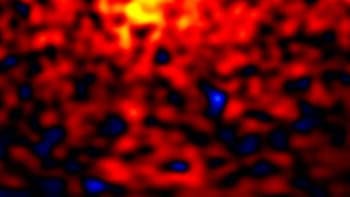Long-term fluctuations in the intensity and inclination of the Earth’s magnetic field could arise from variations in the eccentricity of our planet’s orbit, according to Japanese geophysicists. Toshitsugu Yamazaki and Hirokuni Oda of the Geological Survey of Japan examined the magnetic properties of a sample of marine sediment deposited over a period of 2.25 million years to establish that the Earth’s magnetic field varies over a 100 000-year cycle. Such studies could shed new light on the energy sources that drive the Earth’s dynamo (T Yamazaki and H Oda 2002 Science 295 2435).

Current theories of geomagnetism state that the ‘dynamo’ that powers the Earth’s magnetic field is maintained by heat and gravitational energy. But previously observed long-term patterns in the intensity and inclination of Earth’s magnetic field cannot be explained by these effects, which change on relatively short time-scales.
In order to study long-term variations in the magnetic field, Yamazaki and Oda extracted a column of sediment 42 metres long from the sea floor near the equator, and measured the magnetization of over 1700 samples from this ‘core’. The magnetization of the samples is determined by the orientation of magnetic grains in the sediment. This study revealed that the intensity and orientation of the magnetic field changes over a cycle that lasts 100 000 years.
After ruling out a number of possible candidates – such as climate effects – Yamazaki and Oda proposed that the 100 000 year cycle could arise from changes in the eccentricity of the Earth’s orbit. Eccentricity is a measure of how much the orbit of a planet deviates from a circle, and ranges from zero for a circular orbit to one for a highly elliptical orbit.
Astronomers know that the eccentricity of the Earth’s orbit varies between 0 and 0.06 every 100 000 years. This causes the Earth to pass slightly closer to the Sun during certain epochs. Yamazaki and Oda believe that this could induce slight changes in the Earth’s iron core that affect the generation of the magnetic field, and therefore the way that sediment is deposited in the ocean.
The researchers are optimistic that their theory will prove easy to test because the variations in magnetic field are expected to be very pronounced in certain regions of the Earth’s surface.



